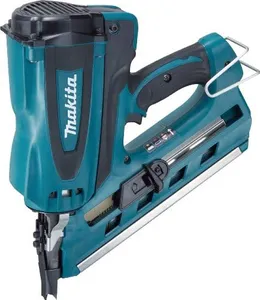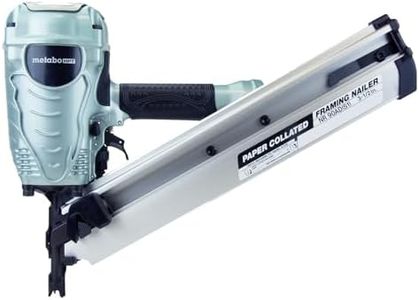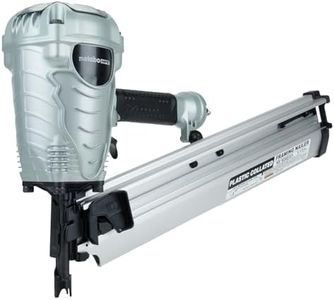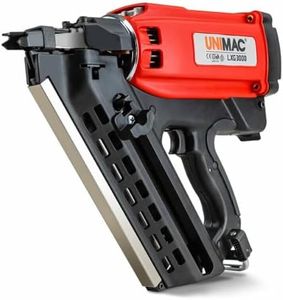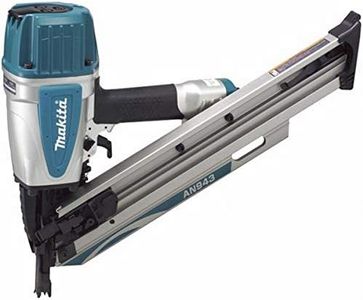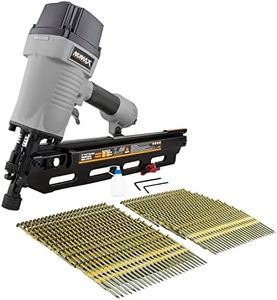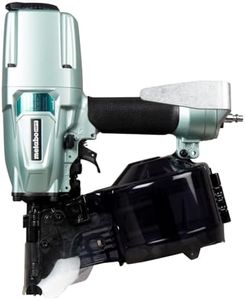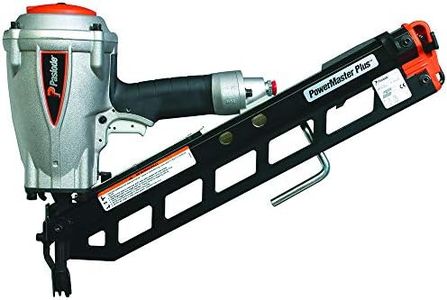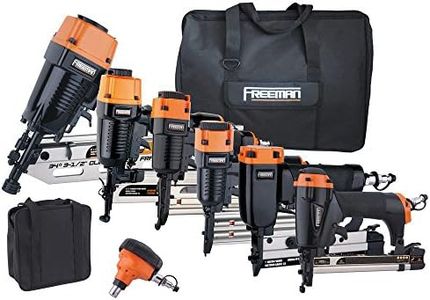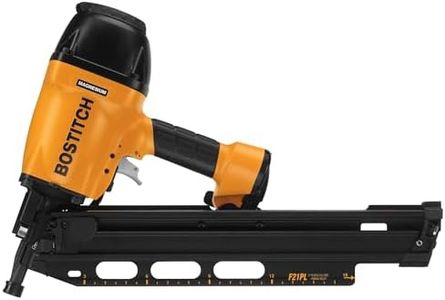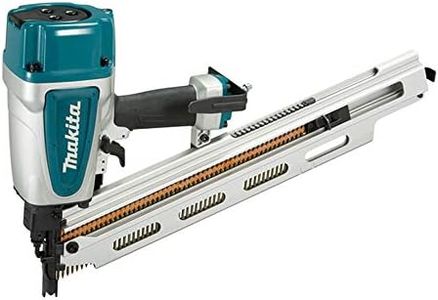We Use CookiesWe use cookies to enhance the security, performance,
functionality and for analytical and promotional activities. By continuing to browse this site you
are agreeing to our privacy policy
10 Best Nail Gun Framing Nailer
From leading brands and best sellers available on the web.Buying Guide for the Best Nail Gun Framing Nailer
Choosing a nail gun, specifically a framing nailer, is an important step for anyone tackling construction or renovation projects. The right tool can make your work faster, safer, and more precise. When shopping for a framing nailer, you should focus on its power source, compatibility with nail sizes, magazine type, weight, firing modes, and safety features. Understanding these specs will help you select a nailer that matches your projects and your own experience level.Power SourceA framing nailer can be powered by air (pneumatic), battery (cordless), or fuel cells (gas-powered). The power source affects portability, maintenance, and running costs. Pneumatic nailers are powerful and reliable for heavy use but require an air compressor and hose. Cordless models use rechargeable batteries for better mobility—ideal for remote or quick jobs—but need recharging and may have less power for dense material. Gas-powered nailers provide strong firing power without cords but require fuel cell replacements and can be heavier. The choice depends on whether you need consistent power for high-volume work or freedom to move around job sites.
Nail Size CompatibilityFraming nailers use various nail lengths and thicknesses to suit different construction tasks. Most handle 2 to 3.5 inch nails, but some have slightly different ranges. Using the right size nail is crucial for your project’s structural integrity. If you mostly work on framing walls or decks, make sure the nailer accepts common framing nails (like 3.25 or 3.5 inches). If you occasionally work on lighter structures, a model that supports shorter nails adds flexibility. Always confirm that your chosen tool matches the nails needed for your regular projects.
Magazine TypeFraming nailers come with either a stick or coil magazine, which is where the nails are stored and fed into the gun. Stick magazines are long and straight, easier to load, and typically hold fewer nails (usually 20–40), making them lighter but requiring more frequent reloading. Coil magazines hold nails in a circular manner, fitting up to 300 nails, which is perfect for long, uninterrupted work but makes the tool heavier and sometimes bulkier. Stick magazines are good for smaller jobs or when you need a lighter tool, while coil magazines shine during big, continuous framing tasks.
Tool WeightThe overall weight of the framing nailer has a big impact on comfort during long work sessions. Lighter nailers reduce arm fatigue and are easier for overhead work, but may offer less durability. Heavier models can be tough to use for extended periods, especially if you're moving a lot or nailing above your head, but often withstand rugged environments better. If you plan on daily or high-volume work, balance choosing a model you can comfortably handle with the robustness you need for job site demands.
Firing ModesFraming nailers may offer different firing modes: sequential (one nail per trigger pull) or bump/rapid fire (hold trigger, tap the nose for quick shots). Sequential mode is safest and suitable for beginners or routine work, as it gives better control and lowers the risk of accidental firing. Bump fire mode speeds up production but requires more skill and care—it’s a favorite among professionals for large projects. Choose based on your comfort level: if you're new or value precision, stick with sequential; if speed is a priority and you have experience, look for a dual-mode tool.
Depth AdjustmentDepth adjustment lets you control how deep the nail is driven into the material, which is key for different wood types and project needs. Some nailers adjust depth with a simple dial or slider, while others might need tools or manual changes. Being able to tweak this easily helps you avoid over-driving or under-driving nails, improving both safety and finish quality. If you expect to work with different materials or care about a smooth finish, look for a framing nailer with tool-free, easy-access depth adjustment.
Safety FeaturesImportant safety features include trigger locks, anti-dry fire mechanisms (which prevent shooting when nails run out), and no-mar tips to protect wood surfaces. These features reduce the risk of accidents and unwanted damage. For users who are new or only use a nailer occasionally, built-in safety features are especially valuable to prevent mishaps. Even experienced users benefit from these protections on busy job sites. Always check the nailer’s safety mechanisms and pick one with robust, easy-to-use features.
